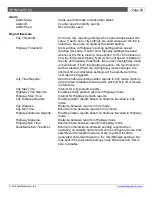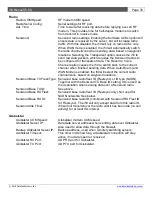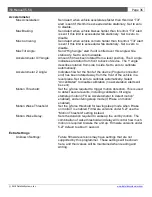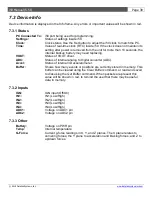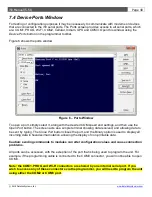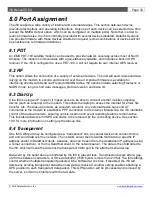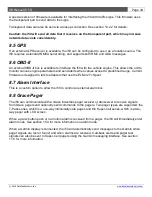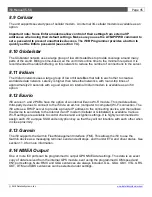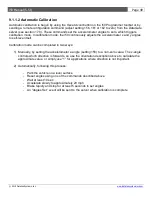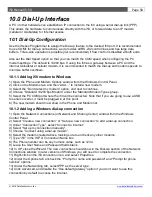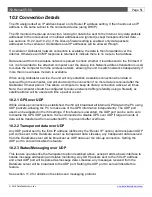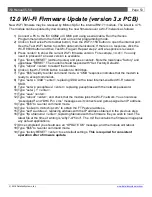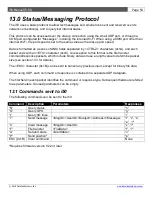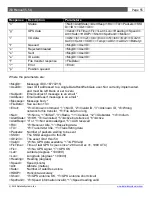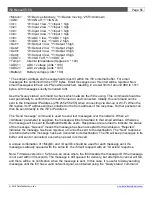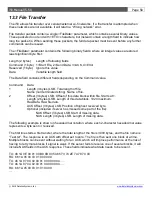
i50 Manual (5.51)
Page 43
© 2018 Datalink Systems, Inc.
www.datalinksystemsinc.com
8.0 Port Assignment
The i50 supports a wide variety of internal and external devices. This section lists each device,
providing descriptions and operating instructions. Only one of each device can be selected at a time
(except the NMEA Output option, which can be configured on multiple ports). Note that in order to
reduce firmware size, the i50 is normally provided with several devices disabled. Datalink Systems
can provide firmware with these devices enabled on request (some combinations of devices will not
be possible due to firmware limitations).
8.1 PDT
An EMS PDT-100 satellite modem can be used to provide network coverage across most of North
America. The modem communicates with a geo-stationary satellite, and includes a built-in GPS
receiver. If the i50 is configured to use a PDT-100, it will not require its own internal GPS receiver.
8.2 RF
This option allows the connection of a variety of external modems. The unit will send raw serial data,
relying on the modem to encode and transmit over the air. Optional firmware is available for
interfacing directly with Kenwood Fleetsync/NXDN radios. i50 options include selecting Fleetsync or
NXDN mode, long or short data messages, protocol version and base ID.
8.3 Dial-Up
If the i50 is using an IP modem, it makes sense to be able to connect another mobile computing
device (such as a laptop) to the modem. This allows the laptop to access the Internet for email, file
transfer, etc. The dial-up port acts as a modem emulator. Any external device can send AT
commands to the modem to establish a PPP connection to the Internet. Meanwhile, the i50 maintains
control of the actual modem, ensuring vehicle location and event reporting features remain active.
This link also allows the i50 GPS and status to be retrieved by the connecting device. See section
10.0 for more information on setting up the dial-up link.
8.4 Transparent
One i50 COM
port may be configured as a “transparent” link. Any serial device can connect to this
port and send data over the network. The network server then forwards that data to a specific IP
address and/or to DataHost clients. Likewise, data can be sent from the destination IP address (using
a Telnet connection), or from a DataHost client, to the network server. The data is then forwarded to
the i50, which will send the data out the transparent COM port to the attached serial device.
Data sent by the serial device is buffered by the i50 to prevent loss. Transmission occurs after a gap
of 200 ms between characters, or if the data buffer (1500 bytes) is more than 2/3 full. The i50 settings
control whether multiple transparent packets will be buffered at one time. If disabled, the i50 will
delete any existing transparent data when new data is received. Another setting enables attaching a
GPS position to each transparent data packet. This GPS position will be processed and removed by
the server, so it will not interfere with the raw data.

